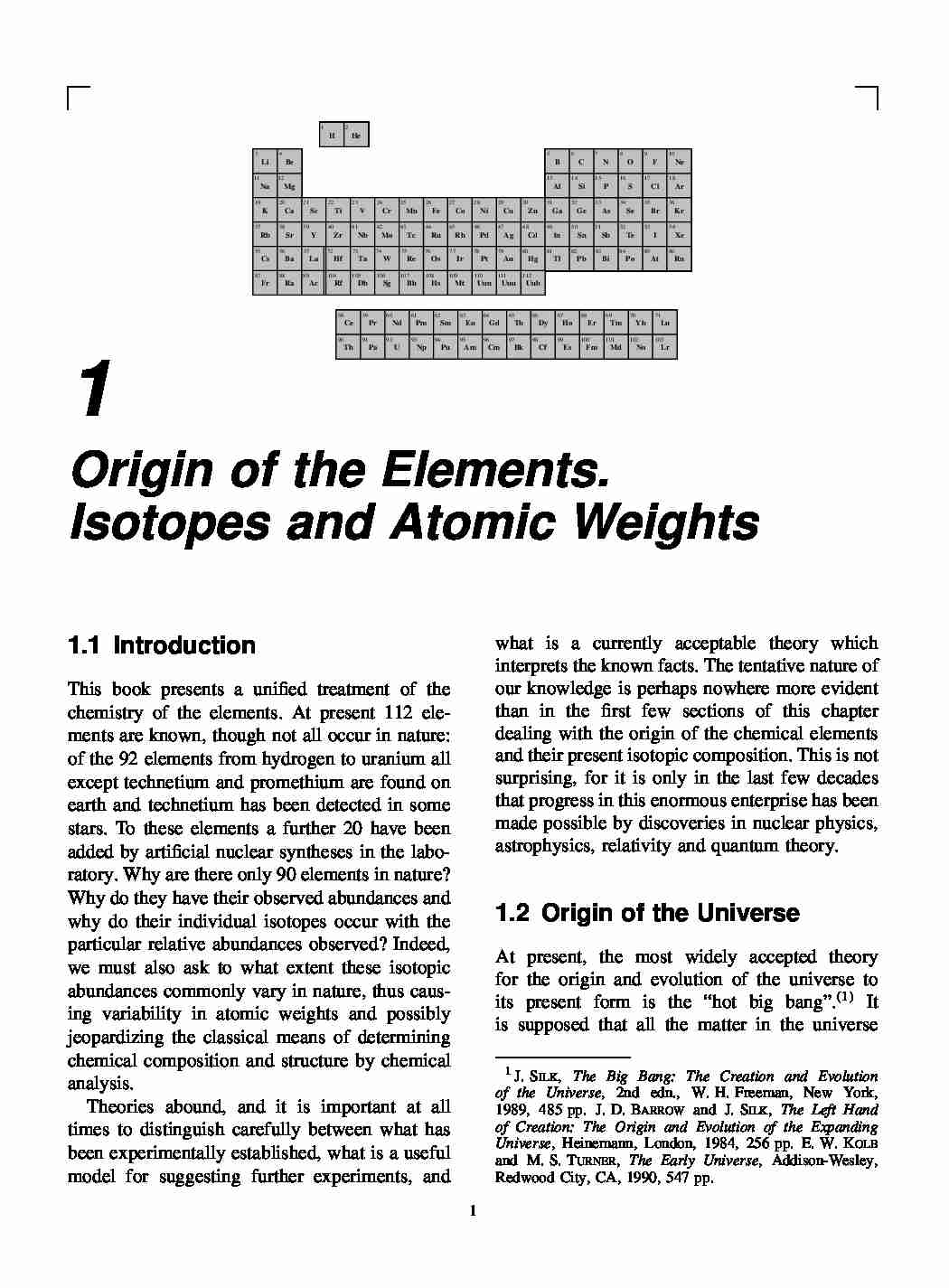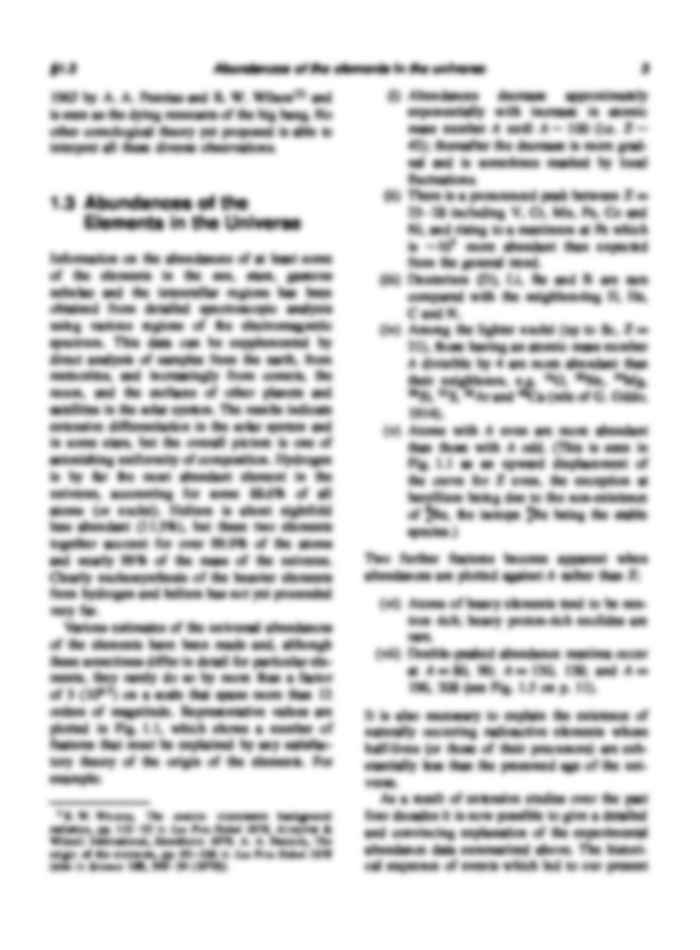To tylko jedna z 19 stron tej notatki. Zaloguj się aby zobaczyć ten dokument.
Zobacz
całą notatkę



1
2
H
3
He
5
4
Li
11
12
Na
19
Mg
Rb
55
Fr
Y
57
Ba
Ra
23
Ti
40
39
88
87
22
Sc
Sr
56
Cs
Al
21
Ca
38
37
7
C
104
89
Ac
106
Db
59
58
Ce
Th
Nd
Pa
Pm
93
92
U
Np
Pt
Mt
63
62
Sm
Pu
65
Gd
Am
Cm
Tl
Pb
54
53
Te
I
84
Bi
Kr
Xe
85
Po
86
At
Rn
Uub
Bk
67
66
Tb
97
96
Sb
83
36
Br
52
51
Sn
82
Ar
35
Se
112
Uuu
64
Eu
95
94
Hg
111
Uun
50
ln
81
Ne
18
Cl
34
As
10
F
17
S
33
Ge
49
Cd
80
Au
110
109
Hs
61
60
Pr
91
90
108
Bh
48
Ag
79
P
32
Ga
9
O
16
15
Si
31
Zn
47
Pd
78
Ir
30
Cu
46
Rh
77
Os
107
Sg
29
Ni
45
76
Re
28
Co
Ru
Tc
75
W
105
27
Fe
44
43
Mo
74
Ta
Rf
26
Mn
42
Nb
73
Hf
25
Cr
41
Zr
72
La
24
V
8
N
14
13
20
K
6
B
Be
Dy
Cf
69
68
Ho
99
98
Er
100
Es
Fm
Tm
101
Md
71
70
Yb
102
No
Lu
103
Lr
1
Origin of the Elements.
Isotopes and Atomic Weights
what is a currently acceptable theory which
interprets the known facts. The tentative nature of
our knowledge is perhaps nowhere more evident
than in the first few sections of this chapter
dealing with the origin of the chemical elements
and their present isotopic composition. This is not
surprising, for it is only in the last few decades
that progress in this enormous enterprise has been
made possible by discoveries in nuclear physics,
astrophysics, relativity and quantum theory.
1.1 Introduction
This book presents a unified treatment of the
chemistry of the elements. At present 112 elements are known, though not all occur in nature:
of the 92 elements from hydrogen to uranium all
except technetium and promethium are found on
earth and technetium has been detected in some
stars. To these elements a further 20 have been
added by artificial nuclear syntheses in the laboratory. Why are there only 90 elements in nature?
Why do they have their observed abundances and
why do their individual isotopes occur with the
particular relative abundances observed? Indeed,
we must also ask to what extent these isotopic
abundances commonly vary in nature, thus causing variability in atomic weights and possibly
jeopardizing the classical means of determining
chemical composition and structure by chemical
analysis.
Theories abound, and it is important at all
times to distinguish carefully between what has
been experimentally established, what is a useful
model for suggesting further experiments, and
1.2 Origin of the Universe
At present, the most widely accepted theory
for the origin and evolution of the universe to
its present form is the “hot big bang”. 1 It
is supposed that all the matter in the universe
1 J. SILK, The Big Bang: The Creation and Evolution
of the Universe, 2nd edn., W. H. Freeman, New York,
1989, 485 pp. J. D. BARROW and J. SILK, The Left Hand
of Creation: The Origin and Evolution of the Expanding
Universe, Heinemann, London, 1984, 256 pp. E. W. KOLB
and M. S. TURNER, The Early Universe, Addison-Wesley,
Redwood City, CA, 1990, 547 pp.
1
2
Origin of the
... zobacz całą notatkę






Komentarze użytkowników (0)